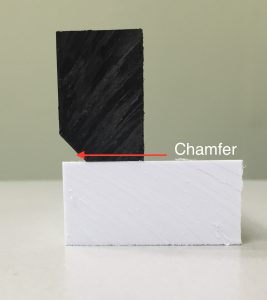Most of what we fabricate here at Plastic Concepts with Polypropylene and other plastics can also be fabricated with metal/stainless steel. Often times, plastic is a great replacement for metal, but sometimes, it really isn’t the best way to go.
So, which material is best for your project?
Our list of pros and cons below will give you a good general comparison of polypropylene vs stainless steel. There are variations within each material and each will have their own characteristics, so for this conversation – we’ll keep it general.
If, by the end of the article, you’re still unsure – give us a call and we’ll be happy to talk you through it.
Plastic
Pros:
- Machinability – It is easy to cut through and its low melting point and high malleability make it conducive to fabricating more complex shapes.
- Perfect for use in Environmental labs where metal can be an issue.
- Does not ding or dent like stainless steel can.
- Chemical resistance- Plastics are less likely to become damaged due to chemicals or chemical reactions whereas metals can oxidize or rust.
- Since it is easier to machine than metal, it is easier to meet demanding timelines.
- Custom applications are affordable and quick.
- Field modifications are easy.
- The life span of polypropylene is longer than metals in most applications.
Cons:
- Polypropylene can degrade when exposed to extreme temperatures.
- If there is no UV inhibitor in the plastic, it is not suitable for prolonged outdoor use as the UV exposure can cause polypropylene to become discolored or crack.
Stainless Steel
Pros:
- More heat-resistant – metals tend to have a higher melting point than plastics.
- Operating temperature – metal can be used in extreme hot and cold temperatures
- Metal has a higher tensile strength than plastic.
- Stainless steel is durable and easy to clean.
Cons:
- More likely to require post-fabrication finishing like de-burring and painting which could add time and cost to the project.
- More difficult to machine/fabricate.
- Custom applications can be costly and have a long production time.
Contact us with your questions and we’ll always point you in the right direction (even if that means it’s toward metals). And if you’re local, please come by for a tour of our shop. We love talking plastics to new people!


